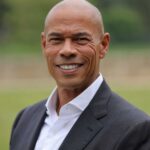Pacific News Service dba New America Media announces closure of organization
SAN FRANCISCO — The board of directors and staff of the nonprofit New America Media (NAM), and its parent organization, Pacific News Service (PNS), announced today that the two entities will cease operations by November 30, 2017.
“For 45 years, Pacific News Service has pioneered new ways to diversify American journalism and communications,” said Board Chair Lawrence Wilkinson. Wilkinson is chairman of Heminge & Condell, a strategic advisory and investment firm, and co-founder of Global Business Network (GBN).
“Long before terms like civic engagement, youth media, collaborative reporting and inclusive journalism were in vogue, PNS and NAM were inventing how to implement them,” noted fellow board member James Bettinger, longtime director (now emeritus) of the John S. Knight Stanford Journalism Fellowship program.
Funded by foundation grants and contracts, the news and communications agency launched many successful projects that pushed journalism’s boundaries.
“We’ve always aspired to do more than our resources allowed,” said NAM Executive Director Sandy Close. “We grew too fast, and were reluctant to cut off programs after their funding expired. We reached a point where we were not sustainable, as currently constituted.”
Of all PNS’ initiatives, none was more ambitious in scope and impact than New America Media. Founded 20 years ago at a Chinese lunch in San Francisco for some 24 ethnic media reporters, it was inspired by PNS’ search for more effective ways to report on an increasingly diverse America.
“How could a mainstream news service like ours do its job when there was no longer a mainstream?” Close said. “We decided to seek out partnerships with ethnic media outlets that would allow us to share content about and between the Bay Area’s growing racial and language groups.”
The founding lunch opened the door to a parallel universe of journalists and media makers hungry to transcend their cultural silos and expand their coverage. Ethnic media leaders realized that, after years of being ignored by the mainstream media, they could gain visibility and respect by coming together.
“If you add our combined circulations, we’re larger than the mainstream dailies,” Alex Esclamado, then the publisher of Philippine News, exclaimed.
New California Media was born by acclamation at that luncheon. What had begun as a modest impulse to diversify PNS’ local news lens turned PNS over the next decade into New America Media.
Ethnic media became our direction-givers, noted Close, inspiring NAM to go beyond journalism to become a quasi-trade association and develop a social marketing arm. NAM organized awards and expos to bring the sector greater visibility, held press briefings with experts and elected officials, coordinated fellowship programs and professional training workshops, facilitated a news exchange, and developed public awareness campaigns that have brought over $10 million to the sector.
“NAM’s ethnic media directory is like a map of America’s new topography,” said Bettinger. “Its gatherings brought reporters from black, Hispanic, Asian, Middle Eastern, Eastern European, African and AfroCaribbean communities together — often for the first time — educating policy makers even as they expanded the sector’s own knowledge base.” To capture their perspectives and document ethnic media’s reach, NAM commissioned some of the country’s first multilingual polls by the late Spanish language pollster Sergio Bendixen. An early poll of the sector’s reach wound up on the front page of the Wall Street Journal, a wakeup call to mainstream journalism. Ethnic media was actually a distinctive genre serving one out of five American adults.
NAM’s work put ethnic media on the radar in a way nothing else had, recalled founding NAM member Monica Lozano, publisher of the Spanish-language La Opinion and CEO of its parent company, ImpreMedia LLC. “NAM has had such an enormous impact that will live long beyond the organization. It built communal ties that will continue to change the narrative, elevate voices, bring communities together and demonstrate to the larger society that we are stronger than any divisive measures others try to impose.”
The most exciting part of NAM’s work, Close noted, is seeing the media collaborate across languages and cultures to tackle issues that affected their communities. “Black media in Arizona stood alongside Arab-American, Latino, Asian-American, and Native American media in denouncing the state law (SB 1070) that would allow police to pull people over and ask for their papers. That’s only one of many examples.”
Close said NAM would not have existed without the foundation laid by Pacific News Service, and the many reporters who started their careers there.
Launched in 1970 by noted China scholar Franz Schurmann (who was also Close’s long-time partner) and freelance journalists like Orville Schell, PNS’s mission was to challenge official government narratives about the U.S. role in Indochina.
When the war ended, PNS used the same model of tapping independent voices to cover other foreign and domestic news.
One highlight was Jessica Yu’s Academy Award-winning short documentary called “Breathing Lessons,” commissioned by PNS to tell the story of another PNS writer, Mark O’Brian, one of the last 100 Americans to live in an iron lung.
Over the years, PNS paid particular attention to America’s growing enmeshment in Central America’s wars, the rise of religious fundamentalism as a force for political change, and the impact of unprecedented immigration on every aspect of American life.
“But it was PNS’ entry into youth communications that made us realize as journalists we could do more than report; we could actually convene people from the communities we were trying to cover,” recalled Close.
In the late 1980s and early 90s — a time of unprecedented urban violence — PNS wanted to look behind the stereotype of inner city youth as “super predators.” It began recruiting young people to speak at forums with policy makers and to write for mainstream media. “Harper’s Magazine was bemoaning the death of literature, yet here were these young people, inventing new forms of self-expression on the streets and in juvenile halls,” said Close.
Among the multiple youth media projects PNS launched or cofounded were YO! Youth Outlook, Youth Radio, now a national leader in the youth media field; The Beat Within, a weekly publication of writing and art from workshops it led in juvenile halls; and Silicon Valley De-Bug, a zine for young people working on the tech industry’s assembly lines. The Beat Within and DeBug are also now independent enterprises.
In 2011, the agency started six youth-produced media platforms in communities that have few homegrown news platforms of their own.
Four hubs now operate independently as YouthWire, a project of Community Partners. The YouthWire network stretches from Coachella to Merced. Two other hubs, Richmond Pulse and South Kern Sol, are run locally and independently.
“Today our challenge is to make sure NAM’s work can live on without NAM,” said Close.
Over the coming weeks, NAM will be exploring alternative ways to continue key projects that leverage ethnic media’s unique access to underserved audiences.
“We are confident that, for all the challenges, the ethnic media sector will not disappear,” Wilkinson said. “As global migration accelerates, too many diaspora populations will need trusted media messengers to stay informed and connected. More immediately, we also believe that the sector’s commitment to work together — to be a bridge across racial and ethnic divides — will be more vital than ever.”





